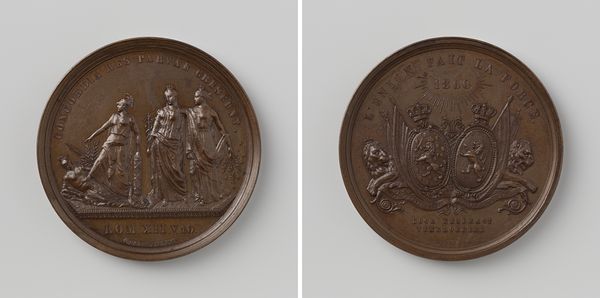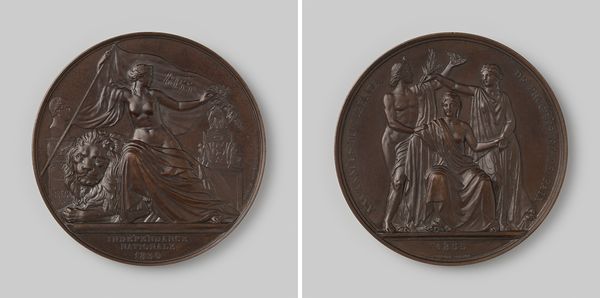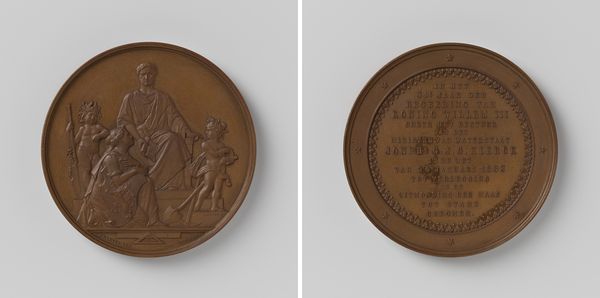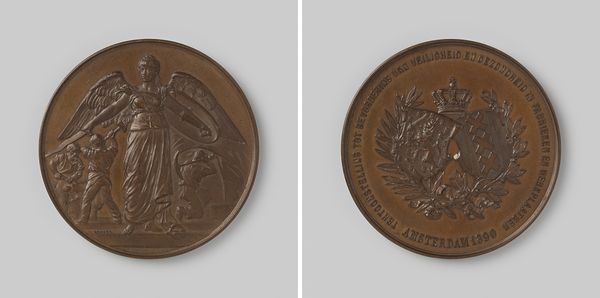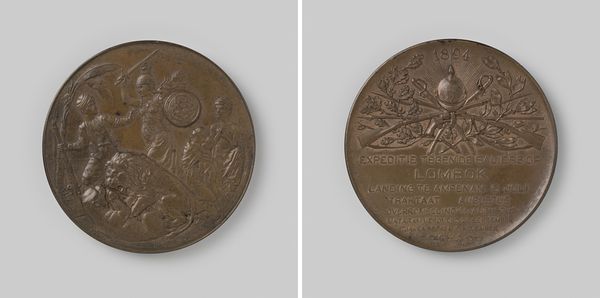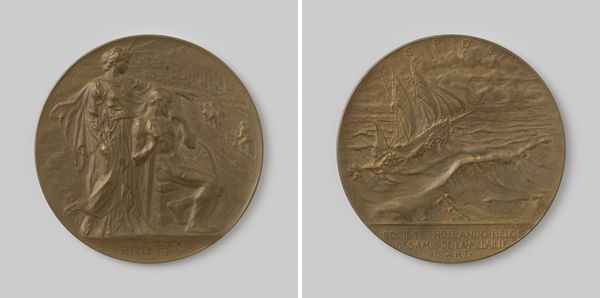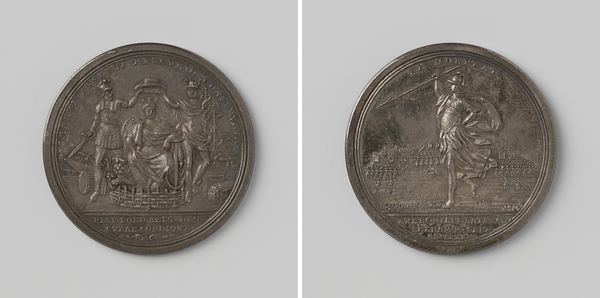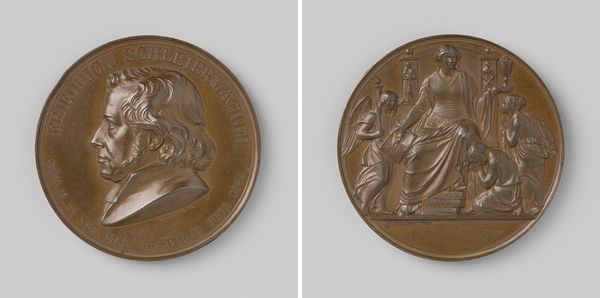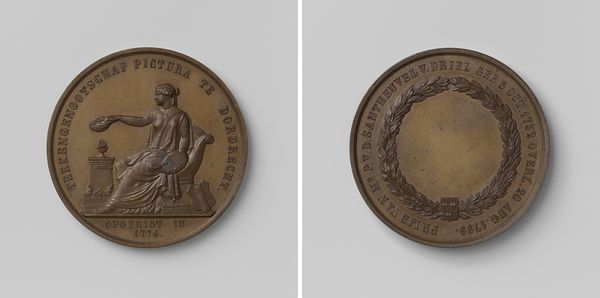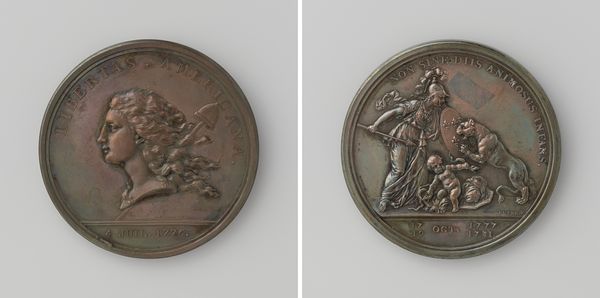
metal, relief, bronze, sculpture
#
portrait
#
neoclacissism
#
metal
#
relief
#
bronze
#
sculpture
#
history-painting
Dimensions: diameter 4.2 cm, weight 39.29 gr
Copyright: Rijks Museum: Open Domain
Editor: Here we have "Frederik Willem koning van Pruisen en de capitulatie van Amsterdam 1787," a bronze relief from 1787. The small scale and use of bronze give it a feeling of historical weight. What do you see in this piece? Curator: The duality immediately strikes me – two sides of a coin, or rather, a medal, each carrying its own dense set of symbols. On one side, the stern profile of Frederik Willem himself, encircled by text. What does this portrait evoke for you? Editor: It gives a sense of power, almost a Roman emperor feel, maybe a bit self-important? The laurel wreath reinforces that. Curator: Precisely! Now, consider the reverse. We see a figure seated with a lion, an angel figure behind with a shield. These are classic allegorical figures of power, victory and might. Can you unpack the historical context based on these images? Editor: So, the text mentions the capitulation of Amsterdam. I guess the symbolism celebrates Prussian dominance in that event, the angel could be there to say "god on our side." The lion… perhaps strength? Curator: Yes! The lion representing the Dutch Republic surrendering. The imagery weaves a strong narrative of triumph, employing established symbols to solidify Frederik Willem's place in history. The medal uses a visual vocabulary to make its point: to broadcast power and assert dominance through recognizable cultural codes. What do you make of its effectiveness? Editor: Knowing the context unlocks so much. It's interesting how even the choice of bronze reinforces a feeling of lasting significance. I initially saw it as just an artifact. Curator: Exactly. Symbols become powerful with layers of understanding. These images were designed to be read and remembered by contemporaries, shaping and solidifying Frederik Willem's narrative for posterity.
Comments
No comments
Be the first to comment and join the conversation on the ultimate creative platform.
